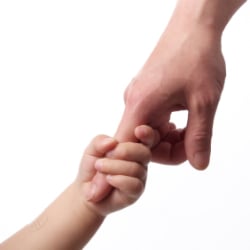
Child Safety for All Ages
7 November 2013
Some safety hazards apply to all children. But many problems are especially dangerous for children at a particular age or stage of development.
It is important to be aware of the different injury risks that come with each developmental stage.
Birth to 8 months
- Never leave a child alone on a changing table, bed or sofa. Children can fall as soon as they can roll over.
- Use gates on stairways and install window guards on all windows above the first floor as soon as your baby can crawl.
- Never leave small objects within your baby’s reach.
- Put your baby to sleep face up to prevent suffocation and reduce the risk of SIDS.
- Never carry hot liquids or food while holding your child.
- Verify the water temperature before putting your child in the bathtub. The safest temperature is below 37C (100F)
8 to 12 months
- Keep pins and other sharp objects off the floor and out of your baby’s reach.
- Install safety plugs in wall sockets.
- Remove easily overturned lamps and dangling electrical cords.
- Place soft adhesive bumpers on the corners of sharp-edged furniture.
- Place a gate across stairways to keep the baby from falling downstairs.
- Keep medicines and poisons in a locked cabinet. Install child locks on cabinets.
- Be sure baby furniture and toys are painted with lead-free paint. Buy age-appropriate toys that are too large to swallow.
- Keep blind and drapery cords out of reach
- Place furniture away from windows.
- Secure furniture such as bookshelves, wall units and televisions to the wall.
- Never leave your baby alone in the bath; keep one hand on the child at all times.
12 to 36 months
- Secure doors that lead to stairways, driveways and storage areas.
- Never leave a child alone in a bathtub or wading pool or other body of water.
- Lock medicines away immediately after use.
- Lock kerosene, pesticides and toxic cleaning products in a safe place.
- Buy age-appropriate toys that are too large to swallow.
- Don’t leave your child alone around burning fireplaces, heaters or other hot appliances.
- Provide constant supervision.
- Store dangerous tools and gardening equipment in a locked shed or cabinet.
- Keep matches and cigarette lighters locked up and out of sight.
- Maintain adult supervision around backyard play equipment.
- Remove drawstrings from your child’s clothing.
3- to 6-year-olds
- Teach your child the right way to use simple kitchen tools and appliances.
- Teach bicycle safety rules and traffic dangers.
- Start swimming lessons. Never leave a child unsupervised around a pool or other body of water, even if the child has had swimming lessons.
6- to 12-year-olds
- Insist that your child wear a helmet when cycling or other appropriate times. Children should wear helmets and wrist and kneepads while inline skating and skateboarding.
- Teach proper use of more complex kitchen appliances.
- Be sure your child uses well-fitting, well-maintained sports equipment when practicing or playing a game.
- Teach your child basic first-aid and what to do in an emergency.
Related Articles
Reviewed by Trauma specialists at the Montreal Children’s Hospital.
Last updated: January 2014, october 2015
This page needs an update? Report it here!
